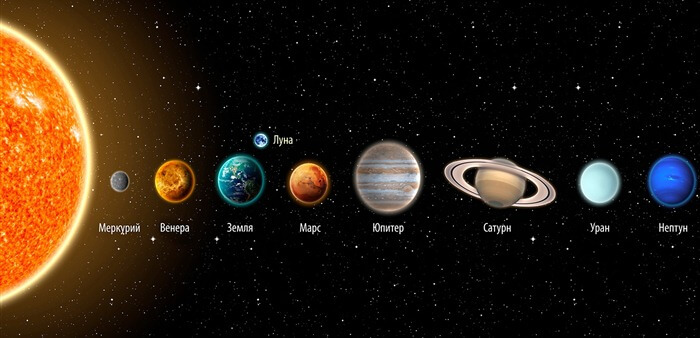For a long time, Pluto was considered the smallest planet in the Solar System. The situation changed in 2006, when it was classified as a dwarf. And although some scientists still disagree with this decision, Mercury is officially recognized as the smallest.
 Scientists note that Mercury is only slightly larger than our Moon. The planet has a diameter of only 4879 km, for comparison, the diameter of our planet is 12742 km, and the largest planet, Jupiter, is 142984 km. Thus, the Earth is 38% larger than Mercury, and Jupiter is 29.3 times larger.
Scientists note that Mercury is only slightly larger than our Moon. The planet has a diameter of only 4879 km, for comparison, the diameter of our planet is 12742 km, and the largest planet, Jupiter, is 142984 km. Thus, the Earth is 38% larger than Mercury, and Jupiter is 29.3 times larger.

The smallest planet in the solar system weighs 3.3*1023 kg. Relative to Earth, Mercury's mass is 0.055. Mercury's volume is 6.083*1010 km3 (0.056 of the Earth's volume). If the Earth were a hollow sphere, 20 Mercurys could fit inside it.
Mercury is a terrestrial planet that is composed of metals and silicate materials. The structure looks like this:
- metal core;
- mantle;
- bark.
The radius of the core is quite large (1800 km), and it is 42% of the total volume of the planet. The thickness of the mantle is presumably 500-700 km, and the crust is 100-300 km. The high content of metals in the depths of Mercury explains the high average density - 5.43 g / cm³, which is not much less than that of the Earth.

The surface of Mercury resembles the Moon in its condition. It is absolutely uniform, but at the same time covered with numerous craters. There is no erosion on the surface, which indicates that there is no significant atmosphere here, only a very rarefied one. According to scientists, the atmospheric pressure on Mercury is 5*1011 times less than the pressure of the Earth's atmosphere.

Mercury - Interesting Facts
One of the features of Mercury is significant temperature differences. This is due to the fact that the planet is closest to the Sun. During the day, the surface warms up to 450 degrees, at night it drops to -170 degrees. At the same time, on the surface of Mercury, in the depths of craters, there is ice, which can be brought by a comet and meteorite or formed from water vapor.

If we could stand on the surface of Mercury, we would only feel 38% of Earth's gravity. At the same time, gravity on the smallest planet is even higher than on Mars, which is due to its high density.
Mercury is called not only the smallest, but also the fastest planet in the solar system. 88 Earth days – that’s how long it takes Mercury to make a full revolution around the Sun.

The planet's magnetic field is a very mysterious phenomenon, not fully understood. What is known for sure is that the magnetic field differs at different poles: at the south it is more intense, at the north it is weaker.
It was previously suggested that Mercury was one of the planets that had a satellite. However, this theory was later refuted.
Studying the smallest planet is quite difficult not only because it is located too close to the Sun. Scientists joke that Mercury likes to "play hide and seek", constantly hiding behind the Sun. At the same time, Mercury is on the list of planets that can be seen with the naked eye. In addition to it, this list includes Venus, Mars, Jupiter and Saturn.














Оставить Комментарий